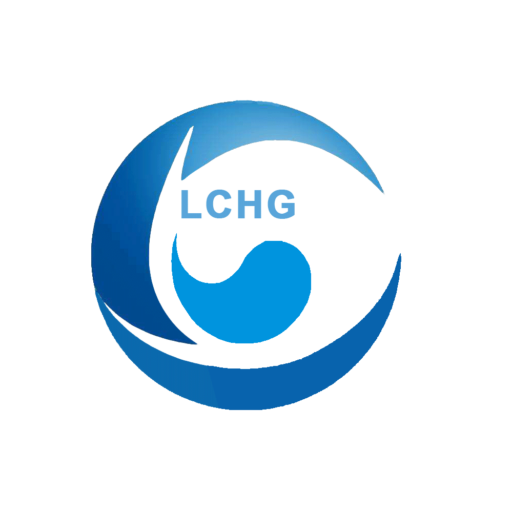UV ink basic components: Photoinitiator
Photoinitiators are molecules that can absorb radiation and produce active intermediates with the ability to initiate polymerization by photochemical changes. Photoinitiator in the initiation of prepolymerization and monomer polymerization reaction, itself becomes part of the polymer structure cured into a film, there is a part not involved in curing into a film.
The effect of photoinitiator concentration on the light curing rate is shown in the figure, from the figure can be seen in the photoinitiator concentration at 7% of the UV light intensity required for the lowest that is the fastest curing rate, but then increase the concentration instead of reducing the curing rate.
Photoinitiator concentration is too high will be two problems, one is due to photoinitiator photolysis will produce part of the non-curing material, weakening the chemical resistance and physical properties of the coating; second is the high concentration of photoinitiator, the surface polymerization rate and the polymerization rate of the coating body ratio increases, different thickness of the coating at different stresses, which will make the coating crumpled, but also lead to fractures within the curing structure and curing layer and substrate This can also lead to fracture within the curing structure and peeling of the cured layer from the substrate.
The inhibitory effect of oxygen on the photoinitiator oxygen molecule is a trilinear state double radical, although it can not initiate acrylate polymerization, but it is easy to compete with the reaction involving other radicals. Photoinitiator photolysis after the formation of the trilinear state and oxygen reaction complexes, complex decomposition of the base state initiator inactivation, this phenomenon is also known as “quenching”; another phenomenon is that the free radicals generated by the photoinitiator and oxygen molecules to generate a more stable peroxide so that the free radicals are “removed “. These two phenomena will make the polymerization rate is greatly reduced, experimental evidence in the presence of oxygen coating 1pm thickness within the curing rate will be reduced by 20 times.
In order to overcome the impact of oxygen on the curing rate, the following measures can be taken. First, the use of inert gas such as nitrogen protection, this method of equipment and material costs are higher; Second, increase the concentration of photoinitiator; Third, in the coating is properly mixed with wax, wax will float on the surface to form a protective layer, isolate the role of oxygen, should not be too much when mixed, otherwise it will affect the gloss; Fourth, add amine sensitizer, reduce the inhibition of oxygen on the surface; Fifth, add some trifunctional groups or four functional groups of acrylate monomer The first is to add some tri- or tetra-functional acrylate monomers, which will increase the number of active points on the surface and thus reduce the oxygen effect.
The choice of photoinitiators from the following aspects, one is the price, the price of different photoinitiators vary dozens of times; second is the color, some photoinitiators produce colored substances after photolysis, such as benzaldehyde; third is the smell, such as benzene coupling dimethyl ketone, the reaction produces methyl formate, odor can not be used for food packaging; fourth is the corrosiveness, such as acetophenone derivatives after the reaction produces hydrochloric acid; fifth is the stability, two Benzophenone and derivatives of good stability, and benzoyldimethyl ketone stability is poor; sixth is the curing rate, such as cheap benzophenone curing rate is very low; seven is the photoinitiator absorb UV light wavelengths vary, the following chart shows several photoinitiator light-sensitive wavelength range.
UV Photoinitiator Same series products
| Product name | CAS NO. | Chemical name |
| Sinocure® TPO | 75980-60-8 | Diphenyl(2,4,6-trimethylbenzoyl)phosphine oxide |
| Sinocure® TPO-L | 84434-11-7 | Ethyl (2,4,6-trimethylbenzoyl) phenylphosphinate |
| Sinocure® 819/920 | 162881-26-7 | Phenylbis(2,4,6-trimethylbenzoyl)phosphine oxide |
| Sinocure® 819 DW | 162881-26-7 | Irgacure 819 DW |
| Sinocure® ITX | 5495-84-1 | 2-Isopropylthioxanthone |
| Sinocure® DETX | 82799-44-8 | 2,4-Diethyl-9H-thioxanthen-9-one |
| Sinocure® BDK/651 | 24650-42-8 | 2,2-Dimethoxy-2-phenylacetophenone |
| Sinocure® 907 | 71868-10-5 | 2-Methyl-4′-(methylthio)-2-morpholinopropiophenone |
| Sinocure® 184 | 947-19-3 | 1-Hydroxycyclohexyl phenyl ketone |
| Sinocure® MBF | 15206-55-0 | Methyl benzoylformate |
| Sinocure® 150 | 163702-01-0 | Benzene, (1-methylethenyl)-, homopolymer,ar-(2-hydroxy-2-methyl-1-oxopropyl) derivs |
| Sinocure® 160 | 71868-15-0 | Difunctional alpha hydroxy ketone |
| Sinocure® 1173 | 7473-98-5 | 2-Hydroxy-2-methylpropiophenone |
| Sinocure® EMK | 90-93-7 | 4,4′-Bis(diethylamino) benzophenone |
| Sinocure® PBZ | 2128-93-0 | 4-Benzoylbiphenyl |
| Sinocure® OMBB/MBB | 606-28-0 | Methyl 2-benzoylbenzoate |
| Sinocure® 784/FMT | 125051-32-3 | BIS(2,6-DIFLUORO-3-(1-HYDROPYRROL-1-YL)PHENYL)TITANOCENE |
| Sinocure® BP | 119-61-9 | Benzophenone |
| Sinocure® 754 | 211510-16-6 | Benzeneacetic acid, alpha-oxo-, Oxydi-2,1-ethanediyl ester |
| Sinocure® CBP | 134-85-0 | 4-Chlorobenzophenone |
| Sinocure® MBP | 134-84-9 | 4-Methylbenzophenone |
| Sinocure® EHA | 21245-02-3 | 2-Ethylhexyl 4-dimethylaminobenzoate |
| Sinocure® DMB | 2208-05-1 | 2-(Dimethylamino)ethyl benzoate |
| Sinocure® EDB | 10287-53-3 | Ethyl 4-dimethylaminobenzoate |
| Sinocure® 250 | 344562-80-7 | (4-Methylphenyl) [4-(2-methylpropyl)phenyl] iodoniumhexafluorophosphate |
| Sinocure® 369 | 119313-12-1 | 2-Benzyl-2-(dimethylamino)-4′-morpholinobutyrophenone |
| Sinocure® 379 | 119344-86-4 | 1-Butanone, 2-(dimethylamino)-2-(4-methylphenyl)methyl-1-4-(4-morpholinyl)phenyl- |
| Sinocure® 938 | 61358-25-6 | Bis(4-tert-butylphenyl)iodonium hexafluorophosphate |
| Sinocure® 6992 MX | 75482-18-7 & 74227-35-3 | Cationic Photoinitiator UVI-6992 |
| Sinocure® 6992 | 68156-13-8 | Diphenyl(4-phenylthio)phenylsufonium hexafluorophosphate |
| Sinocure® 6993-S | 71449-78-0 & 89452-37-9 | Mixed type triarylsulfonium hexafluoroantimonate salts |
| Sinocure® 6993-P | 71449-78-0 | 4-Thiophenyl phenyl diphenyl sulfonium hexafluoroantimonate |
| Sinocure® 1206 | Photoinitiator APi-1206 |
